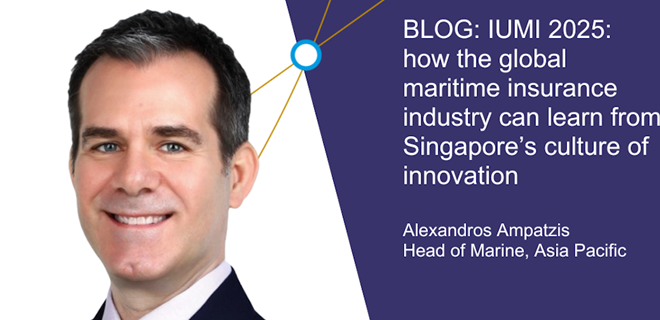
Insights

How to tackle the triple threat to women’s health
Monday, March 3, 2025
Women’s health has historically been under-researched, and the gender health gap now poses a very real threat. After years of underinvestment, women are less likely to have access to pharmacological or technological solutions to sex-specific problems and are more likely to be misdiagnosed, misdosed and mistreated.
There are a growing number of female-led startups fighting back, seeking to redress this imbalance and tackle unmet female health needs through innovation. From a menstrual cup that monitors blood to an AI system that detects breast cancers, the female healthcare (FemHealth) sector has the potential to become a $100 billion industry by 2030.
There is clear demand, so why do FemHealth founders face so many barriers when it comes to scaling their businesses?
The answer can be boiled down to what we have termed the triple threat: the investment barrier, digital censorship and the insurance barrier, all of which are inherently interlinked.
The triple threat: overcoming structural barriers
A consequence of women’s health being under-researched is that there is a chronic lack of data on women’s health issues. As a result, FemHealth firms often need more time to conduct studies and impact assessments. Naturally, this slows product development. However, often this does not meet with venture capital firms’ models, which deem such investments too long-term, compounded by a concern that they are “too risky” with concern around the financial and reputational implications of a product malfunction. A recent survey conducted by insurance provider Tokio Marine Kiln found that 84% of FemHealth founders have struggled to secure funding from investors.
FemHealth businesses which navigate these initial hurdles, secure funding and develop their products, then risk having these innovations censored on key search platforms. The keywords used to describe some women’s health products can be flagged as inappropriate or explicit content, leading to advertisements being automatically removed and accounts being suspended. More than half (59%) of FemHealth founders interviewed had suffered from digital censorship.
Online marketplaces and social media platforms have a responsibility to ensure that their algorithms are fit for purpose. While more experienced FemHealth businesses are often able to overcome these algorithms and tailor content to minimise the risk of it being flagged as “adult”, new market entrants often get caught out. The time taken to resolve the matter through official complaints procedures can result in significant lost revenue, for which there is little appropriate insurance cover.
Insurance can help tackle both the investment gap and digital censorship, but as it stands it is another barrier to these founders. More than three-quarters (76%) of FemHealth founders reported issues when seeking insurance, citing a host of concerns. Over half (56%) said the cost was prohibitive, with policies designed for larger, corporate entities that do not account for the unique risks and needs of the FemHealth industry.
Half (50%) of founders also cited the complexity of the insurance buying process as a barrier, with those who managed to find a potential policy met with unacceptable exclusions. This onerous and discouraging process is thanks, in part to, a lack of understanding of women’s health issues within the insurance market. More than a third (39%) of FemHealth founders said underwriters had no appetite for the risk, with 42% of brokers not understanding the issues to begin with.
Some 76% of FemHealth founders surveyed by Tokio Marine Kiln reported barriers when seeking insurance, citing a host of concerns.
Addressing inequalities through insurance
Historically, FemHealth businesses haven’t had access to bespoke insurance policies, because there is little precedent for underwriters to price the risk. Without the right insurance, however, they cannot run clinical trials. Without proof of concept and a working product, they struggle to secure investment. Those who do might allocate some funding to marketing, only to have their efforts squashed by digital censorship. Without being able to showcase demand, securing investment is harder. No money equals no clinical trials. The challenges FemHealth firms face in getting their products to market are clear: without insurance, they will fail at the first hurdle.
Given the vital need to redress the balance and tackle the structural barriers that have held progress in women’s health back for generations, the need for action is clear. The cycle is hard to break, but the insurance industry has the ability to do so. While insurance is currently proving difficult for the industry to navigate, offering bespoke policies, combined with a commitment to better understanding the importance of this growing industry, can provide a way forward. As FemHealth firms face a host of threats, from cyber-attacks to lawsuits and regulatory actions, tailored insurance coverage and specialist expertise can help these businesses achieve their full potential.
The FemHealth sector needs a true partner in insurance and the industry must step up to prevent another generation of women from receiving insufficient healthcare.
Kirsten Shastri is head of life sciences at Tokio Marine Kiln.
This article was first published in Healthcare Today

Kirsten Shastri
Head of Life Sciences
London
LATEST INSIGHTS

Flying out of danger: using real-time data to avert a potential aviation disaster
By Will Green, Divisional Head of Airline, Contingent & War
16 October 2025
Decades of conflict in eastern DRC have escalated in 2025, with rebel advances threatening key infrastructure. This blog explores how real-time intelligence helped aviation clients respond swiftly to emerging risks—and how insurers are evolving to proactively mitigate geopolitical threats.

A new generation of cyber risk demands a “next-generation” approach to insurance: Enter TMK Cyber Ctrl
By Laila Khudairi, Departmental Head of Cyber & Enterprise Risk
25 September 2025
Cyber threats have steadily increased in sophistication and scale, with attacks costing the global economy billions every year. Cybercriminals have evolved from lone wolves to groups akin to mid-sized corporations with HR departments and training programmes.

IUMI 2025: how the global maritime insurance industry can learn from Singapore’s culture of innovation
By Alexandros Ampatzis, Head of Marine, Asia Pacific
03 September 2025
It is clear that Singapore is truly taking advantage of the new opportunities created by automation. Discussions at IUMI will need to focus on how the insurance industry should follow suit in order to keep pace with the new risks and opportunities it presents.